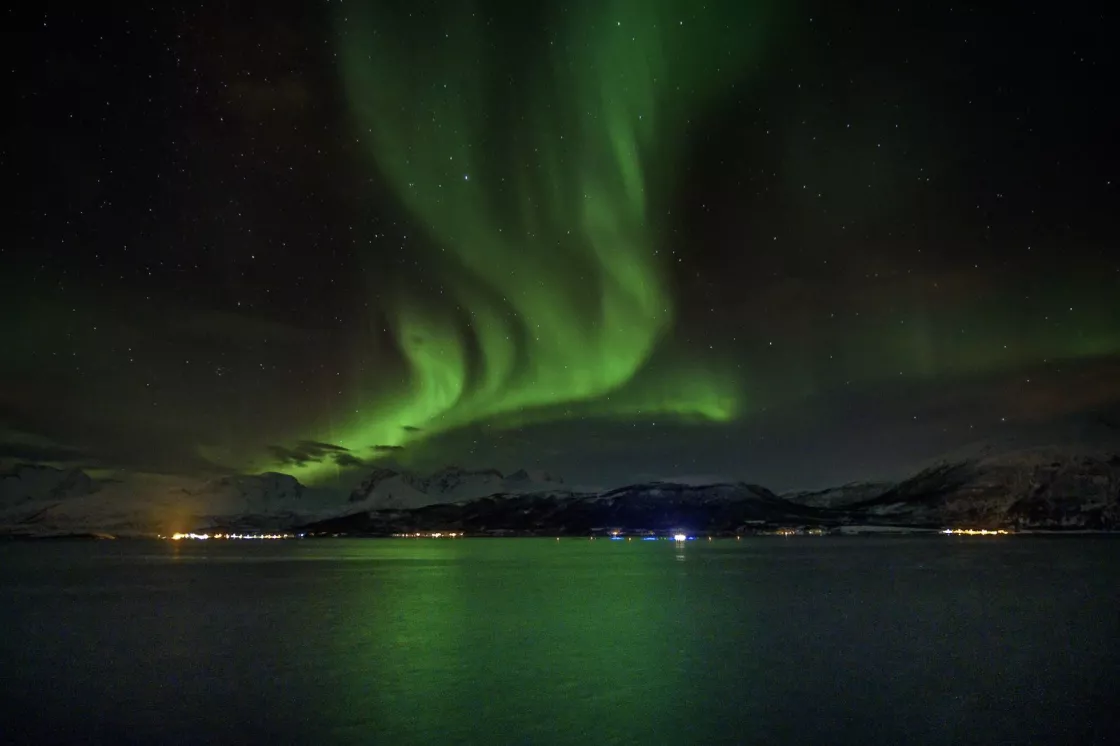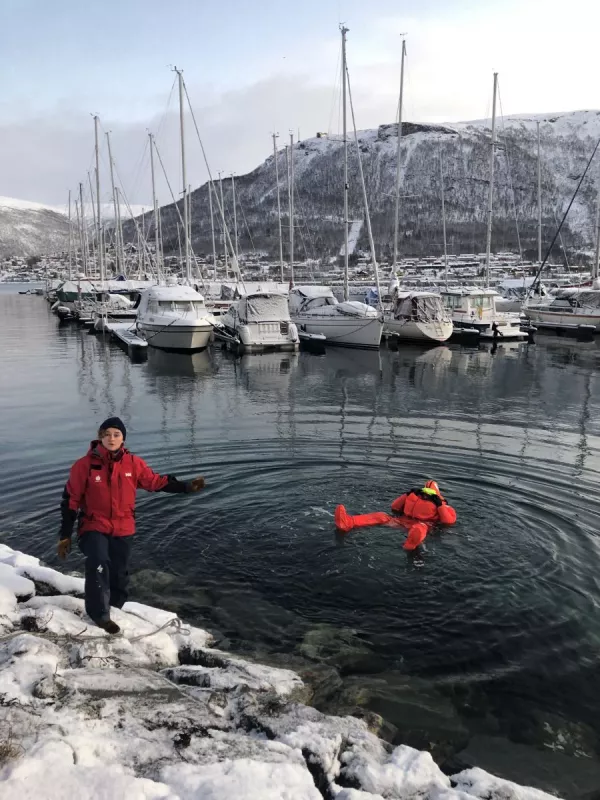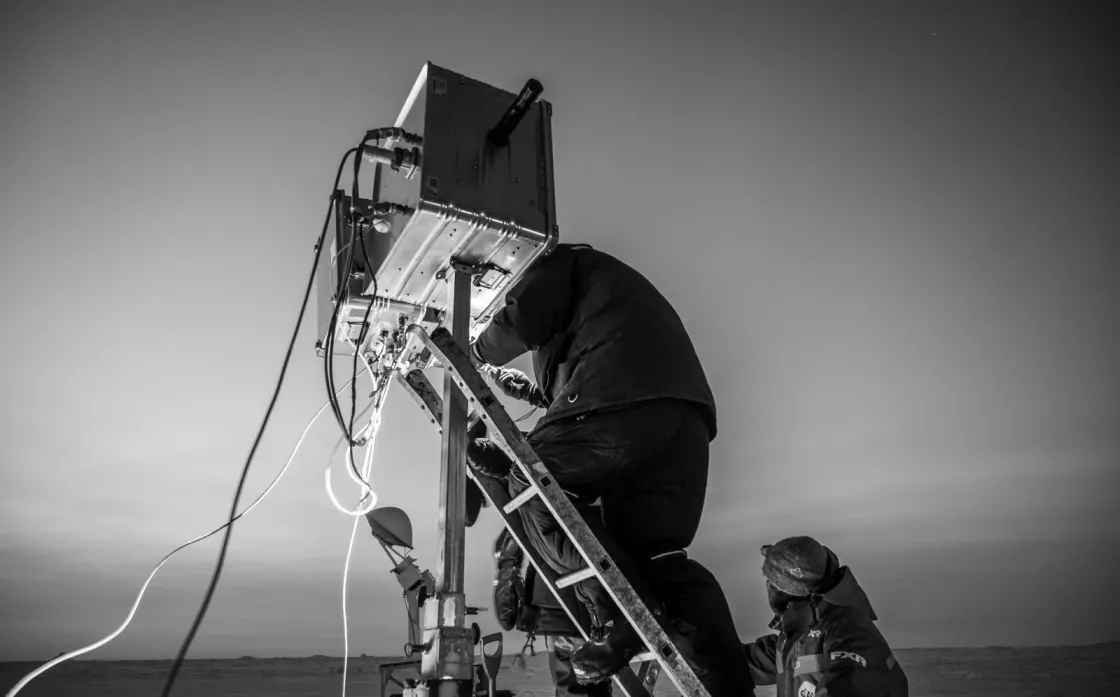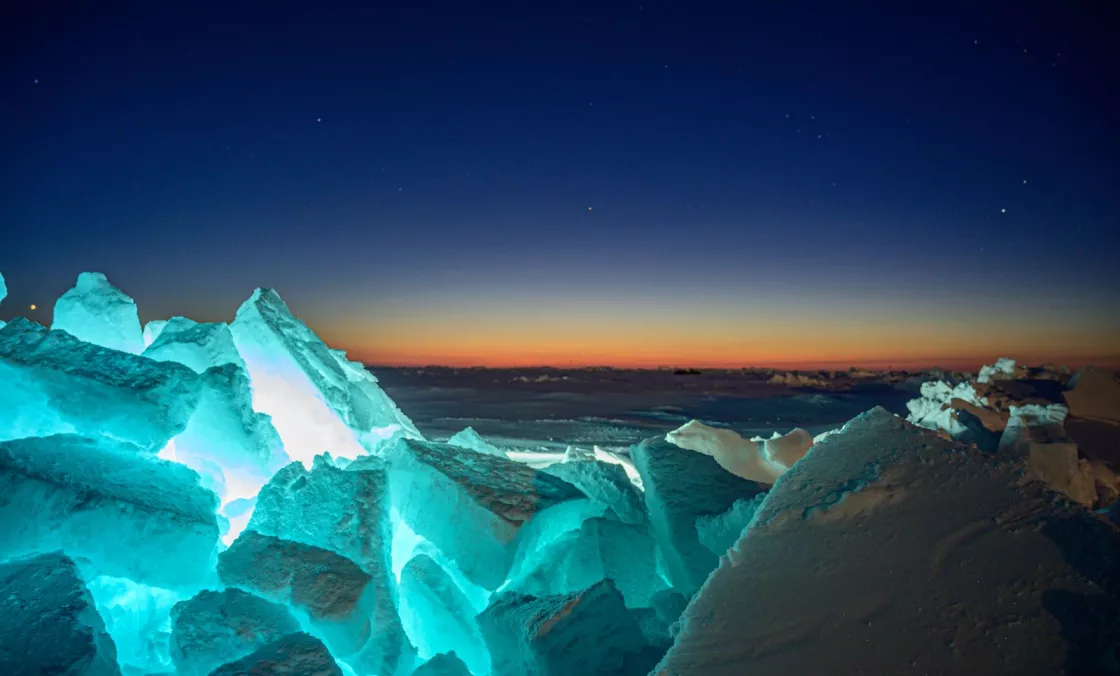By Agnieszka Gautier
Frozen into sea ice for a year—that was the idea behind a German icebreaker when it set off on the largest Central Arctic science expedition in history in September 2019. The R/V Polarstern pushed against the thin sea ice conditions of late summer and locked into an ice floe at 85°N and 137°E. Engines idling, the R/V Polarstern drifted for months, letting the ice set its course, but the ice was far more dynamic than researchers had anticipated. As with so much in 2020, the mission needed to adapt to the unexpected.
When it was time to exchange crew and scientists, no icebreaker could meet R/V Polarstern. So, toward the end of May, months ahead of schedule, the R/V Polarstern left the fractured ice floe and a portion of scientific instruments to resupply and transfer scientists in Norway’s Svalbard. To minimize data gaps, R/V Polarstern plans to race back to resume its mission, which is set to conclude in October 2020, the end of the annual freeze-thaw cycle. It is expected, however, that the ship will need to find more stable ice soon. Even with gaps in data coverage, Julienne Stroeve of NSIDC will contribute vital information on snow characteristics to help improve satellite products that measure sea ice thickness.
In preparation for MOSAiC
The Multidisciplinary drifting Observatory for the Study of Arctic Climate (MOSAiC) is a 13-month, $155 million expedition to study all aspects of the Arctic climate system, focusing especially on the interactions between the ocean, sea ice, and atmosphere. With so much old ice lost in the Arctic Ocean, scientists had to settle for a second-year-old ice floe, meaning that it survived one melt year. Surrounding the ship, pockets of observational camps were set up to collect data. The expedition was split into six legs, each two months long and divided between 600 experts from 20 countries. To resupply the drifting R/V Polarstern, the Russian icebreaker Kapitan Dranitsyn had to travel from Tromsø, Norway, a roundtrip that should have added four weeks to each leg of the expedition.
Stroeve joined the Polarstern for the coldest and darkest leg of the expedition: leg two, set for December 15, 2019 to February 15, 2020. However, as a result of thicker ice conditions than Kapitan Dranitsyn could handle, the leg three team did not arrive until early March. Storms and COVID-19 delays further extended Stroeve’s sea legs to four and a half months, finally returning to land at the beginning of April. Stroeve spent three months in complete darkness.
Before she left, we sat down for a conversation about her research plans and expectations. “Working in the dark will be really challenging,” Stroeve said. Though the German ship has a sun tanning booth on board, Stroeve worried about the lack of sunlight. “I just don’t know what that does to your mind—not having any sunlight,” she said. In the pitch black, other threats arise. “The polar bears will most likely smell us and come,” Stroeve said. Night vision goggles are essential. “We’ve been told we cannot go out on the ice without a polar bear guard,” she said. Some scientists even trained for this, but not Stroeve: “I’m a horrible shot.”
Then, there is the extreme cold. “I need a headlamp that can deal with -40 degree Celsius (-40 degree Fahrenheit) temperatures.” At such temperatures, a lot of things stop working: batteries fail, screens freeze, plastic straps break, and pens do not write. “I’m going to get electric socks,” Stroeve said, concerned about cold feet. Even with medics and doctors on board, a fear lingered in the back of her mind. “If you get really sick or hurt, you can’t get rescued.”
Stroeve anticipated going out on the ice daily to check on her $600,000 radar, funded by the University of Manitoba. The radar was designed to define and characterize how radar at two different frequencies interact with the snow on the sea ice, measurements which may upset previous and future sea ice thickness estimates using satellite data.
Through the looking glass
Satellites have been measuring the extent of Arctic sea ice since the late 1970s, but it is trickier to gauge ice thickness than it is to locate an ice edge. It was not until 2003 that the NASA Ice, Cloud, and land Elevation Satellite (ICESat) launched, giving scientists the ability to approximate ice thickness on a pan-Arctic scale by measuring the height of the snow plus sea ice above the sea surface. Then, in 2010, the European Space Agency’s (ESA) CryoSat-2 launched on a quest to map the thickness of sea ice at both poles using radars similar to those Stroeve brought on the MOSAiC expedition.
Satellites like ICESat and CryoSat-2 measure the response time of a signal sent from the spacecraft to the Earth’s surface and back. CryoSat-2 uses radar to penetrate the snow and reflect off the ice surface to measure sea ice thickness. In September 2018, ICESat-2 launched with advanced laser technology, shooting 10,000 laser pulses per second as compared to the 40 pulses per second on the first ICESat. From a single laser, six beams reflect off the first surface they hit, be it open water, bare sea ice, or accumulated snow, measuring height within an inch of accuracy. With some additional data, such as knowledge of how much snow is on the ice, scientists are able to use the reflections to calculate sea ice thickness. ICESat-2 data is currently available at the NASA NSIDC Distributed Active Archive Center.
Compared to CryoSat-2, sea ice thickness measurements from ICESat-2 are coming up much thinner. “ICESat-2 sea ice thickness is up to a meter thinner in some places,” said Stroeve. “That is huge.”
So why the huge discrepancy? Stroeve hopes her time in on the ice will help answer this question.
Snowflake wonderland
Snow, it turns out, complicates sea ice thickness measurements. One of the main assumptions with the type of radar used on CryoSat-2 is that it pierces through the snow above the ice surface before bouncing back. However, if there is any liquid water in the snowpack or a melt pond on top of the ice, then this is not true. If there is any salinity in the snowpack, or internal ice layers, then this is also not true.
Stroeve’s instrument is a critical component of the puzzle to disentangle snow from radar measurements of sea ice thickness. Her simple radar, perched on a metal frame, points straight down and mimics the radar on CryoSat-2. Part of the time it stayed put, the rest of the time it traversed the ice, sending out a signal as it moved. When the wavelengths interact with the snow and ice, they change shape or energy. “How the radar interacts with the snow will tell you something about the snow,” said Stroeve. Snow can be dense or fluffy. It can be dry or partially melted. It can have recognizable ice crystals, like in new snow, or be so old that the crystals are no longer defined. “In the Arctic Ocean, salt can easily get whipped up into that snowpack,” Stroeve said, and salt changes things.
Salt in the snowpack deflects radar pulses before they reach the ice surface. This makes the ice seem thicker than it is. In multiyear ice, which survives one or more years of summer melt, the salt is gone. With enough freeze-thaw cycles, the salt gets pushed out of the snowpack, and quite often, the snow melts off by the end of summer. However, first-year ice, which grows in the fall and winter but melts in the spring and summer, can easily trap brine in its snowcap. In a rapidly changing Arctic, first-year ice has become more prevalent in the last few decades, encompassing 70 percent of Arctic sea ice cover in 2020 compared to 35 to 40 percent in the mid-1980s.
To calculate sea ice thickness, the snow needs to get cut out from the equation. One solution is to compare data from CryoSat-2 against ICESat-2 data. Since CryoSat-2 penetrates through the snow to the ice surface, while ICESat-2 reflects off the top of the snow surface, subtracting the two should provide accurate snow depth measurements, in theory. But with more first-year ice and more saline snowpacks, the CryoSat-2 radar reading could be off. That is where Stroeve’s observations and data are key.
“Every time we will go outside to download data we will measure the snow depth,” Stroeve said. Stroeve can then compare the actual snow depth with the radar reading. “For instance,” Stroeve said, “If the radar comes back at 20 centimeters but the snow depth is 30 centimeters, then you know the radar didn’t even hit the ice.” And your sea ice is 10 centimeters thicker than it should be.
Standing on thin ice
Stroeve’s goal is to accurately measure the snowpack against the ICSat-2 and Cryosat-2 readings. She hopes that in the future a physical snowpack model could help refine satellite readings based on her work with the MOSAiC project. By better understanding the seasonal variability of the snowpack— how, when, and where it accumulates—scientists can better understand how the radar interacts with these different snow properties. That data can be modeled into the satellite processing, refining sea ice thickness calculations. “That would be ideal,” she said, “but even characterizing the uncertainty with the numbers we’re seeing will help answer how well CryoSat-2 really does.”
As for her trip out to the Arctic, Stroeve says, “I’m always a bit nervous before I go on a field season, but when I actually go, I really like it. It’s mainly because you get to know people well and build friendships.” A stipulation of the MOSAiC project is that all the garnered data will be free and open to the public for generations. It may even be that in the very near future, we will know the thinness of the sea ice beneath the scientists’ feet.
Stay tuned for Part II on Stroeve’s time on the R/V Polarstern and read how her research and expedition expectations turned out.
Further reading
The Multidisciplinary drifting Observatory for the Study of Arctic Climate (MOSAiC) expedition
Access data through the NSIDC DAAC
NASA's NSIDC DAAC manages, distributes, and supports a variety of cryospheric and climate-related datasets as one of the discipline-specific Earth Science Data and Information System (ESDIS) data centers within NASA's Earth Science Data Systems (ESDS) Program. User Resources include data documentation, help articles, data tools, training, and on-demand user support. Learn more about NSIDC DAAC services.



